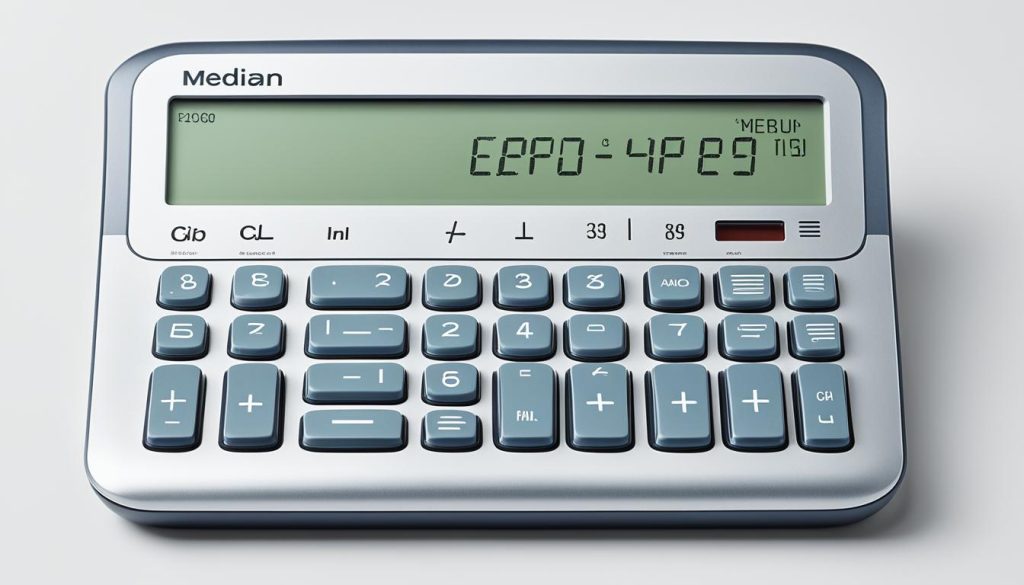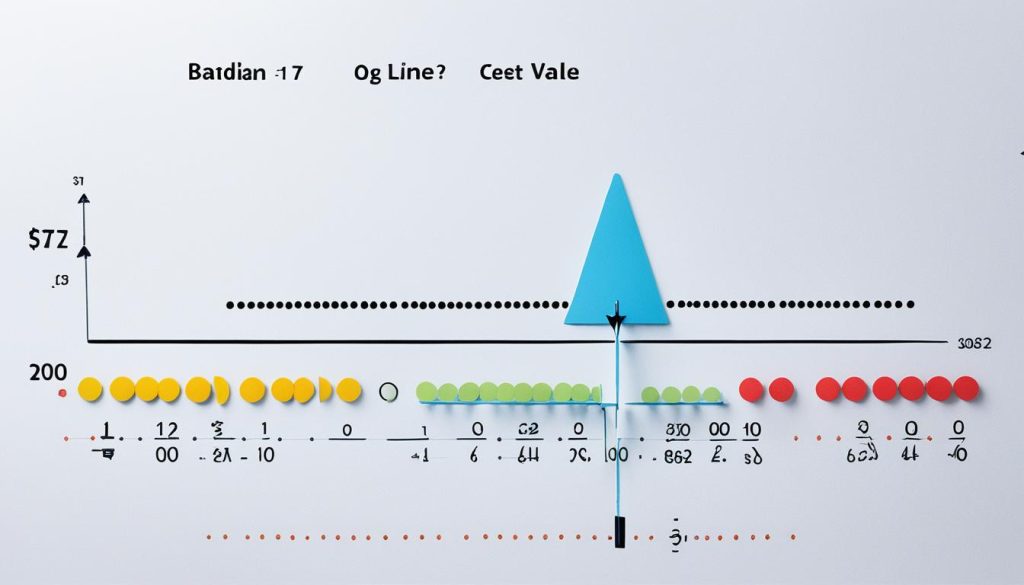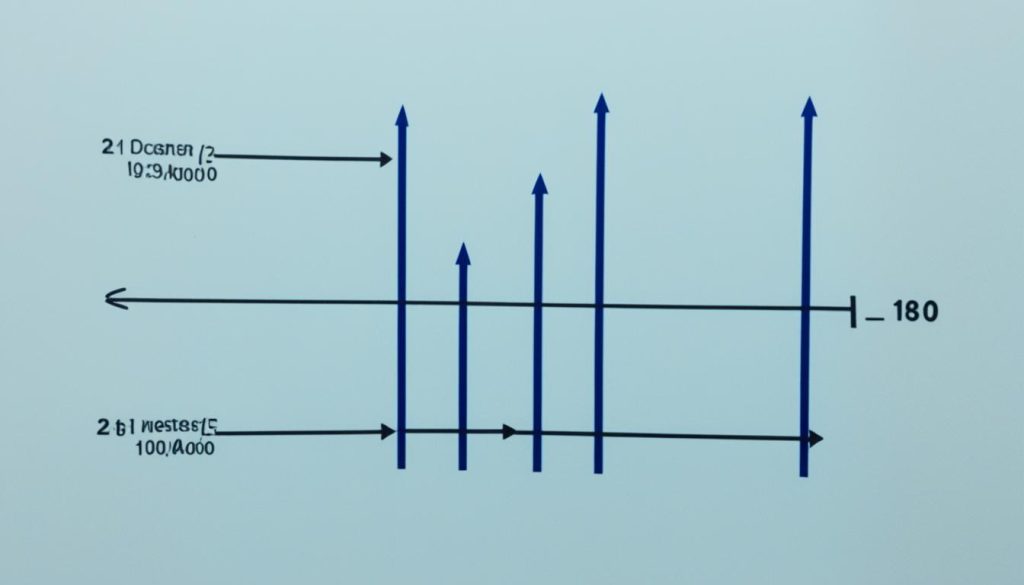Are you looking to calculate the median of a dataset? Understanding how to find the median is an essential skill in statistics and data analysis. Whether you are dealing with quantitative data or ordinal datasets, the median provides valuable insight into the central tendency of your data.
The median is a measure that divides a dataset into two equal halves, separating the lowest 50% from the highest 50% of values. It helps in identifying the middle value in a dataset, giving you a clear understanding of the distribution.
If you’re wondering how to calculate the median and what formula to use, don’t worry. We’ll guide you through the process step by step, ensuring that you can easily determine the median in any given dataset. Let’s dive in and explore the different methods for finding the median.
How to Find the Median?
Median Calculator
Calculating the median of a dataset can be done manually or with the assistance of a median calculator. This tool simplifies the process by automatically performing the necessary calculations to find the median value. It is a convenient and efficient way to obtain quick and accurate results.
Whether you are working with a small dataset or a large dataset, a median calculator can save you time and effort. By inputting your data, the calculator will swiftly analyze the values and present you with the median.
Using a median calculator eliminates the need for manual computations, reducing the chance of errors. Additionally, it allows you to focus on analyzing your data rather than spending valuable time on calculations.
Today, several websites and software offer median calculators that are easily accessible and user-friendly. They provide a seamless experience, enabling you to find the median with just a few clicks.
Utilizing a median calculator guarantees accurate results and streamlines the process of finding the median of a dataset.

Continue reading to learn how to find the median with an odd-numbered dataset in Section 3.
Find the Median with an Odd-Numbered Dataset
When dealing with an odd-numbered dataset, the following steps can be followed to find the median:
- Step 1: Arrange the data in ascending order.
- Step 2: Identify the middle value in the sorted dataset.
- Step 3: The middle value is the median of the dataset.
Let’s take an example to illustrate the process. Consider the following odd-numbered dataset:
| Data |
|---|
| 24 |
| 17 |
| 12 |
| 9 |
| 3 |
Step 1: Arrange the data in ascending order:
| Data |
|---|
| 3 |
| 9 |
| 12 |
| 17 |
| 24 |
Step 2: Identify the middle value in the sorted dataset:
The middle value is 12, which is the third value in the dataset.
Step 3: The middle value is the median of the dataset.

This process works for any odd-numbered dataset and enables you to find the median easily.
Find the Median with an Even-Numbered Dataset
Calculating the median for an even-numbered dataset follows a different approach compared to odd-numbered datasets. When you have an even number of data points, you need to find the average of the middle two values to determine the median.
Let’s take an example to understand this better:
Consider the following dataset:
| Data Points |
|---|
| 12 |
| 18 |
| 25 |
| 30 |
To find the median, we first sort the dataset:
| Sorted Data Points |
|---|
| 12 |
| 18 |
| 25 |
| 30 |
Since we have an even number of data points (four in this case), we find the average of the middle two values, which are 18 and 25. Adding them together and dividing by 2, we get:
(18 + 25) / 2 = 43 / 2 = 21.5
Therefore, the median of the dataset is 21.5.
By following these steps, you can accurately find the median of an even-numbered dataset. Remember to take the average of the two middle values to determine the median.

Visual representation for finding the median of an even-numbered dataset.
Find the Median with Ordinal Data
The median is commonly used in statistics to determine the central value of a dataset. While it is typically associated with quantitative data, the median can also be calculated for ordinal data. Ordinal data consists of ranked categories, such as beginner, intermediate, and fluent language levels. Despite being non-numeric, ordinal data can still have a middle value that represents the median.
To find the median for ordinal data, a similar process is followed as with numerical data. The values are ordered based on their rankings, and the middle value is identified as the median. This can be illustrated with the following example:
| Category | Number of People |
|---|---|
| Beginner | 8 |
| Intermediate | 12 |
| Fluent | 15 |
In this example, we have an ordinal dataset consisting of language proficiency levels. By arranging the categories in ascending order based on their rankings, we get “Beginner”, “Intermediate”, and “Fluent”. As there is an odd number of categories, we can clearly identify the middle value, which is “Intermediate”. Therefore, the median for this dataset is “Intermediate”.
However, it’s important to note that for even-numbered ordinal datasets, calculating the median is not as straightforward. Since the mean cannot be calculated for non-numeric data, the median is usually not determined unless the data is converted into a numerical format.

When Should You Use the Median?
The median is a valuable measure of central tendency that is particularly useful in data analysis, especially in situations where the distribution of data is skewed or contains outliers. Skewed distributions have a cluster of values on one side of the center and a spread out tail on the other side. In such cases, the median is less affected by extreme outliers or non-symmetric distributions compared to the mean and mode.
To illustrate this, consider the following example:
| Country | Population (millions) |
|---|---|
| United Kingdom | 66 |
| India | 1393 |
| China | 1444 |
| United States | 331 |
In this table, the median population would be 1327.5 million, as it falls between India and China, the two countries with the largest populations. However, if we were to calculate the mean population, it would be significantly affected by the extreme values of China and India, giving us a less representative measure of central tendency.
Another scenario where the median is commonly used is when analyzing variables with a positively skewed distribution, such as income. Income tends to have a cluster of values towards the lower end and a long tail of high incomes. The median provides a more accurate representation of the typical income compared to the mean, which can be heavily influenced by a few extremely high incomes.
The level of measurement of the variable, whether ordinal, interval, or ratio, also plays a role in determining whether the median should be used. The median can be calculated for variables measured on an ordinal scale, where values are ranked or ordered, as well as for variables measured on an interval or ratio scale.
By considering these factors and utilizing the median calculation method, analysts can effectively handle skewed distributions and outliers, gaining meaningful insights from their data.
Conclusion
Finding the median is an essential statistical calculation that plays a crucial role in understanding the central tendency of a dataset. By following the appropriate steps based on the dataset’s oddness or evenness, you can accurately determine the median value. Whether you are working with quantitative or ordinal data, the median provides valuable insights and is particularly useful in skewed distributions or when dealing with outliers.
The median is less influenced by extreme values or non-symmetric distributions compared to the mean and mode. This makes it a reliable measure of central tendency, especially for variables like income that often exhibit positive skewness. Additionally, the level of measurement of the variable, whether ordinal, interval, or ratio, determines the suitability of the median.
Understanding when and how to use the median is crucial for effective data analysis and interpretation. Whether you are conducting research, analyzing survey results, or making business decisions, incorporating the median calculation method enables you to gain a comprehensive understanding of your data and make informed decisions.

